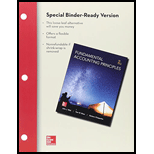
1)
Introduction:
Ratio Analysis
• Ratio analysis is a study of several key metrics of a company based on the data presented in its’ financial statements with an objective to evaluate the financial health of a company.
• It is essential for investors, stakeholders, government bodies etc. to evaluate the key metrics of an entity in order to ensure that the company fulfills the going concern principle and displays financial stability.
The key metrics mentioned above include the following:
• Days’ sales uncollected – A measure of the total outstanding collections for credit sales in number of days.
•
•
• Return on Total Assets – A measure of the total
• Total Asset Turnover – A measure of the correlation between the Total assets employed and the turnover of the business. It seeks to evaluate the volume of sales in relation to the assets employed.
• Profit Margin – A measure of the Profit and turnover. It is an indicator of the profit earned by the business in percentage terms from each unit of goods sold.
To Determine:
Ratios that are key components in measuring a company’s operating efficiency and the ratio that summarizes these components.
2)
Introduction:
Ratio Analysis
• Ratio analysis is a study of several key metrics of a company based on the data presented in its’ financial statements with an objective to evaluate the financial health of a company.
• It is essential for investors, stakeholders, government bodies etc. to evaluate the key metrics of an entity in order to ensure that the company fulfills the going concern principle and displays financial stability.
The key metrics mentioned above include the following:
• Days’ sales uncollected – A measure of the total outstanding collections for credit sales in number of days.
• Accounts receivable turnover – A measure of the relation between the turnover and accounts receivable measured in number of times.
• Working capital Ratio – A measure of the correlation between the working capital deployed and the total turnover evaluating the effectiveness of the working capital utilized by the business.
• Return on Total Assets – A measure of the total returns on investment in the form of assets. It is an indicator of the profitability of the assets employed by the business.
• Total Asset Turnover – A measure of the correlation between the Total assets employed and the turnover of the business. It seeks to evaluate the volume of sales in relation to the assets employed.
• Profit Margin – A measure of the Profit and turnover. It is an indicator of the profit earned by the business in percentage terms from each unit of goods sold.
To Determine:
The measure which reflects the difference between current assets and current liabilities.
3)
Introduction:
Ratio Analysis
• Ratio analysis is a study of several key metrics of a company based on the data presented in its’ financial statements with an objective to evaluate the financial health of a company.
• It is essential for investors, stakeholders, government bodies etc. to evaluate the key metrics of an entity in order to ensure that the company fulfills the going concern principle and displays financial stability.
The key metrics mentioned above include the following:
• Days’ sales uncollected – A measure of the total outstanding collections for credit sales in number of days.
• Accounts receivable turnover – A measure of the relation between the turnover and accounts receivable measured in number of times.
• Working capital Ratio – A measure of the correlation between the working capital deployed and the total turnover evaluating the effectiveness of the working capital utilized by the business.
• Return on Total Assets – A measure of the total returns on investment in the form of assets. It is an indicator of the profitability of the assets employed by the business.
• Total Asset Turnover – A measure of the correlation between the Total assets employed and the turnover of the business. It seeks to evaluate the volume of sales in relation to the assets employed.
• Profit Margin – A measure of the Profit and turnover. It is an indicator of the profit earned by the business in percentage terms from each unit of goods sold.
To Determine:
The ratios that measure how frequently a company collects its accounts receivables.
Want to see the full answer?
Check out a sample textbook solution
Chapter 17 Solutions
Loose Leaf for Fundamentals of Accounting Principles and Connect Access Card

 AccountingAccountingISBN:9781337272094Author:WARREN, Carl S., Reeve, James M., Duchac, Jonathan E.Publisher:Cengage Learning,
AccountingAccountingISBN:9781337272094Author:WARREN, Carl S., Reeve, James M., Duchac, Jonathan E.Publisher:Cengage Learning, Accounting Information SystemsAccountingISBN:9781337619202Author:Hall, James A.Publisher:Cengage Learning,
Accounting Information SystemsAccountingISBN:9781337619202Author:Hall, James A.Publisher:Cengage Learning, Horngren's Cost Accounting: A Managerial Emphasis...AccountingISBN:9780134475585Author:Srikant M. Datar, Madhav V. RajanPublisher:PEARSON
Horngren's Cost Accounting: A Managerial Emphasis...AccountingISBN:9780134475585Author:Srikant M. Datar, Madhav V. RajanPublisher:PEARSON Intermediate AccountingAccountingISBN:9781259722660Author:J. David Spiceland, Mark W. Nelson, Wayne M ThomasPublisher:McGraw-Hill Education
Intermediate AccountingAccountingISBN:9781259722660Author:J. David Spiceland, Mark W. Nelson, Wayne M ThomasPublisher:McGraw-Hill Education Financial and Managerial AccountingAccountingISBN:9781259726705Author:John J Wild, Ken W. Shaw, Barbara Chiappetta Fundamental Accounting PrinciplesPublisher:McGraw-Hill Education
Financial and Managerial AccountingAccountingISBN:9781259726705Author:John J Wild, Ken W. Shaw, Barbara Chiappetta Fundamental Accounting PrinciplesPublisher:McGraw-Hill Education





